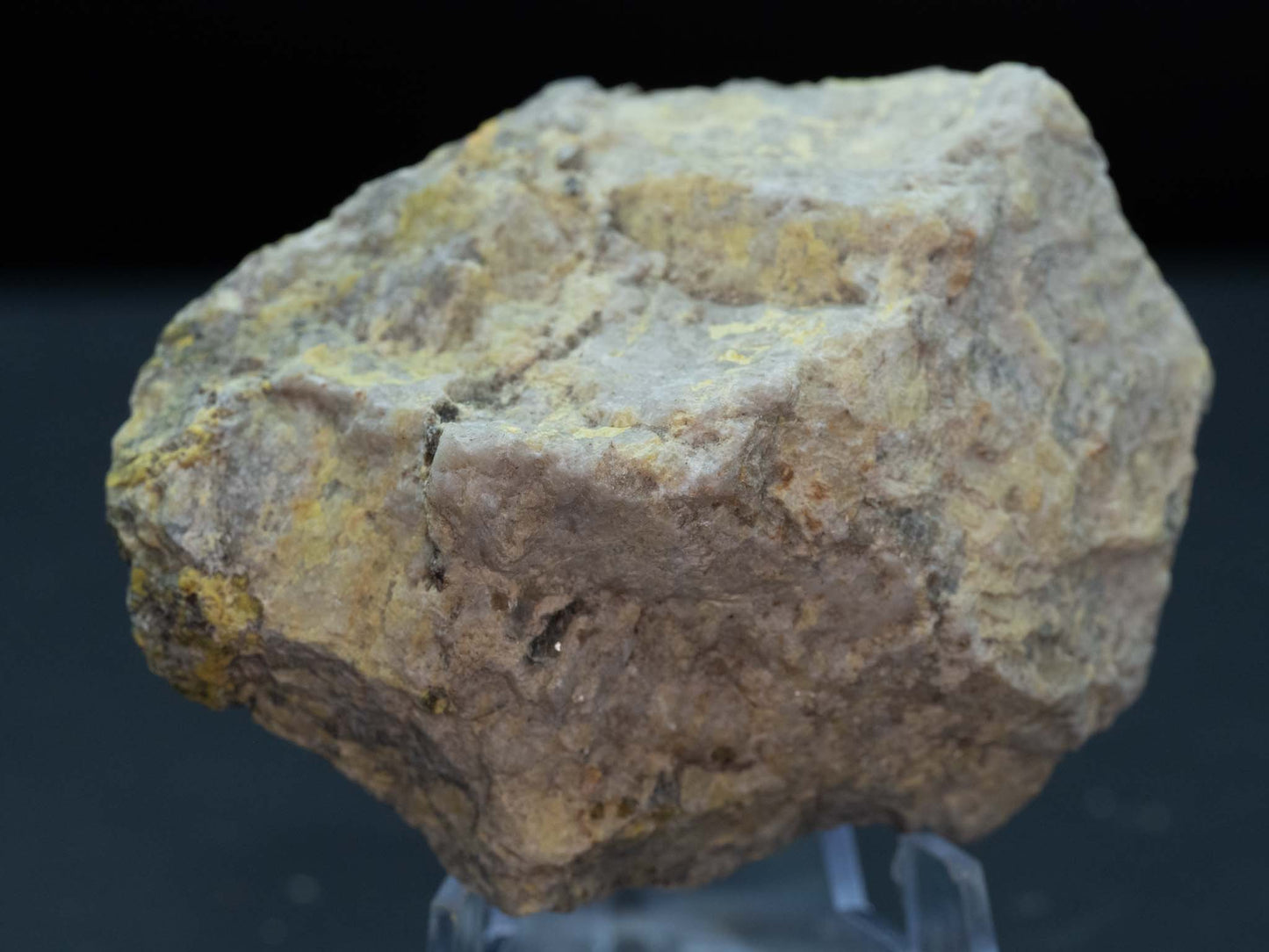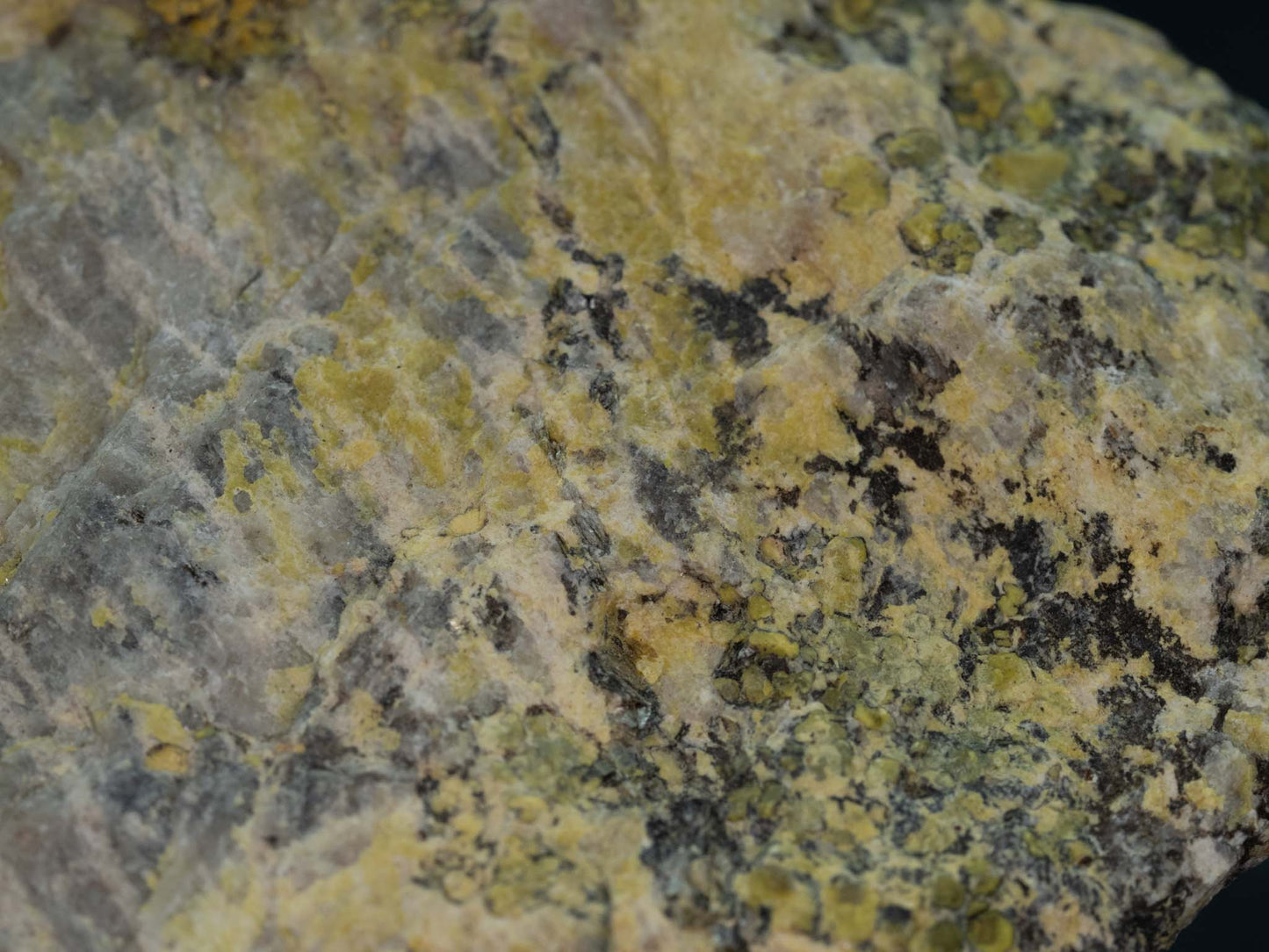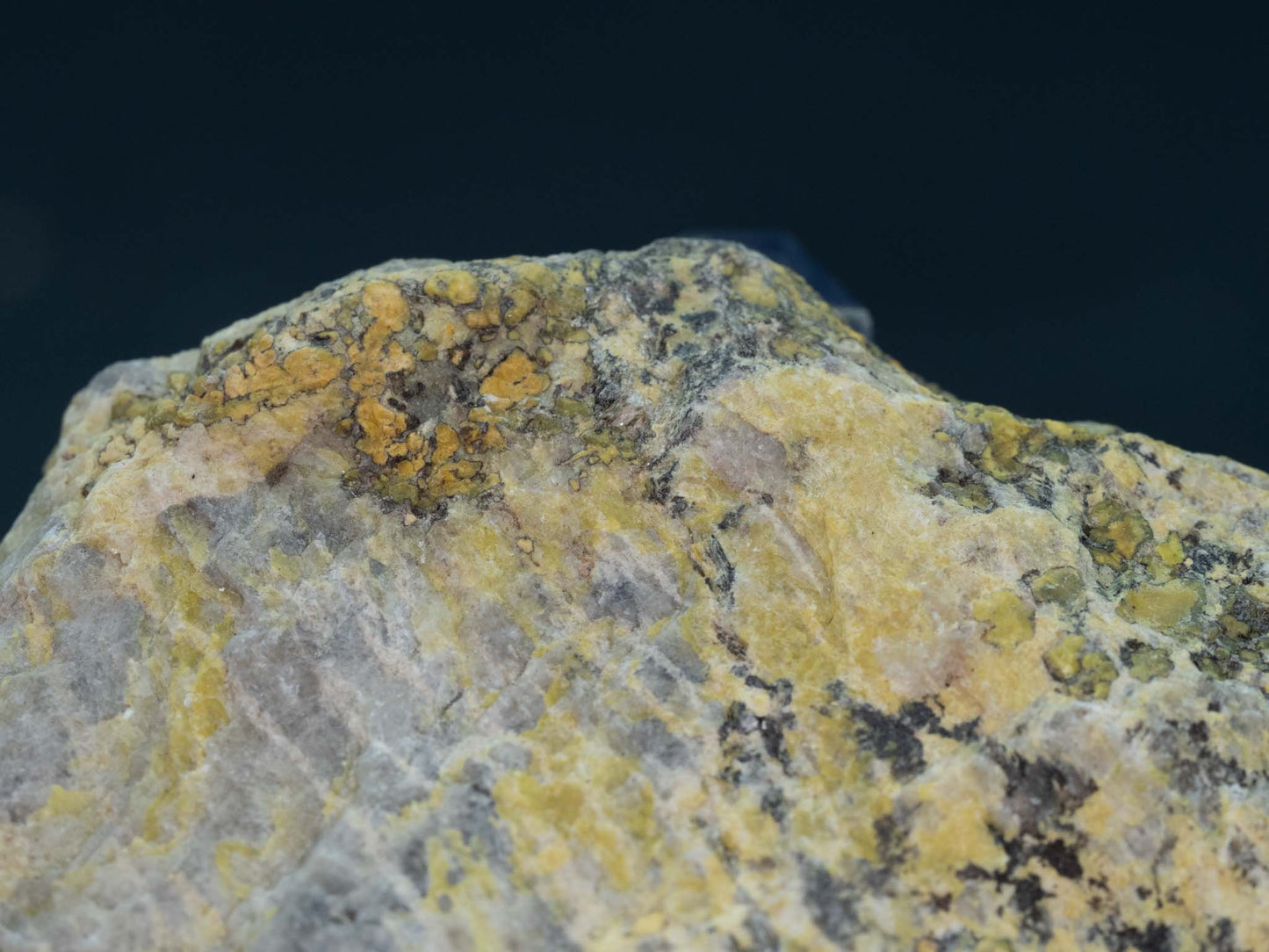Rad Man Minerals
Uraninite/Gummite - Ruggles Mine, Grafton, Grafton County, New Hampshire, USA
Uraninite/Gummite - Ruggles Mine, Grafton, Grafton County, New Hampshire, USA
Couldn't load pickup availability
 UO2
UO2
Uraninite and Gummite from the Ruggles Mine in Grafton, New Hampshire, are significant examples of primary and secondary uranium minerals, offering insights into the mineralogical and geochemical processes in pegmatitic environments. These minerals, often found together, highlight the interplay of radioactive decay, weathering, and secondary mineralization in uranium-rich deposits.
Uraninite () is the primary uranium-bearing mineral found at the Ruggles Mine. It appears as dense, black to dark gray masses or small crystals with a submetallic to greasy luster. As a primary ore of uranium, uraninite is highly radioactive and has historically been mined for its uranium content. At Ruggles, it is found in association with the pegmatitic host rock, often alongside minerals such as feldspar, mica, and zircon. The geological environment of the mine, characterized by granite pegmatites, facilitated the formation of uraninite through high-temperature magmatic processes.
Gummite, on the other hand, is a colorful secondary mineral that forms as an alteration product of uraninite. It is not a distinct mineral but rather a mixture of hydrated uranium oxides, silicates, and other secondary uranium minerals, often including autunite or uranophane. Gummite typically exhibits bright yellow, orange, or reddish hues and appears as crusts or coatings on weathered uraninite. At the Ruggles Mine, gummite highlights the effects of oxidation and hydration processes that occur when uraninite is exposed to groundwater or atmospheric conditions.
The Ruggles Mine provides a unique setting for studying the transition from primary to secondary uranium minerals. Uraninite reflects the original uranium mineralization in the pegmatite, while gummite serves as a record of the chemical and environmental changes that occurred post-deposition. Together, these minerals reveal the dynamic processes that govern uranium mobility and mineralization in the Earth's crust.
Specimens of uraninite and gummite from Ruggles are valued by collectors for their contrasting appearances and historical significance. While uraninite’s metallic black luster and density emphasize its role as a primary mineral, gummite’s vibrant colors and textures add aesthetic appeal. However, handling these specimens requires care due to their radioactive nature. The study and collection of uraninite and gummite from the Ruggles Mine continue to contribute to our understanding of uranium geology and the intricate processes of mineral alteration.
Approx. specimen size: 60mm x 45mm x 30mm
Approx. specimen activity on an SE International Ranger EXP: 105 000 cpm








